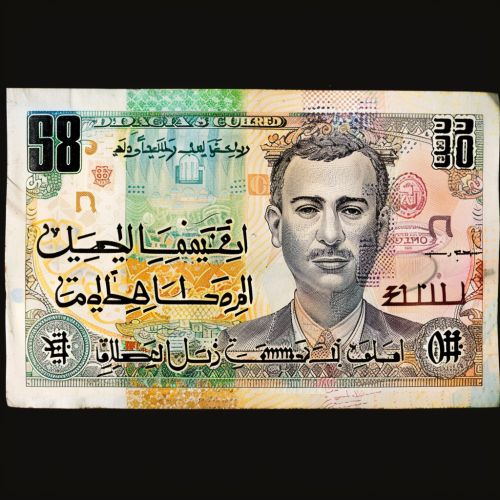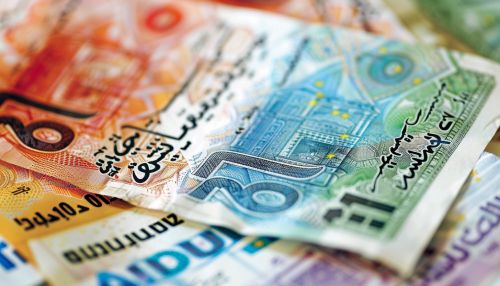Palestinian pound
Introduction
The Palestinian pound was the currency of the British Mandate of Palestine from 1927 until 1948. It was also used in Transjordan until 1949 and in the West Bank until 1950. This article delves into the historical context, design, issuance, and eventual discontinuation of the Palestinian pound, providing a comprehensive overview of its significance and role in the region's economic history.
Historical Context
The introduction of the Palestinian pound was a result of the British Mandate for Palestine, which was established after World War I. The mandate was a legal commission for the administration of the territory that had formerly constituted the Ottoman Empire's southern Levant. The British sought to create a stable and unified currency to replace the Egyptian pound, which had been in use since the British occupation of Palestine in 1917.
British Mandate for Palestine
The British Mandate for Palestine was sanctioned by the League of Nations in 1922, with the aim of establishing a "national home for the Jewish people" while ensuring the rights of the existing non-Jewish communities. The mandate period was marked by significant political and social changes, including the establishment of various institutions and the introduction of new administrative frameworks.
Issuance and Design
The Palestinian pound was introduced in 1927, pegged to the British pound sterling at a rate of 1:1. The currency was issued by the Palestine Currency Board, which was established by the British authorities to oversee the issuance and regulation of the new currency.
Banknotes
The banknotes of the Palestinian pound were issued in denominations of 500 mils, 1, 5, 10, 50, 100, and 500 pounds. The design of the banknotes featured both Arabic and Hebrew text, reflecting the diverse population of the mandate. The notes also included English text, which was the official language of the British administration.


The banknotes were printed by Thomas De La Rue & Company, a renowned British security printing company. The design elements included images of local landmarks, such as the Dome of the Rock and the Tower of David, as well as traditional motifs and symbols.
Coins
Coins were issued in denominations of 1, 2, 5, 10, 20, 50, and 100 mils. The coins were minted in various metals, including bronze, nickel, and silver. The obverse of the coins typically featured the denomination and the year of minting in Arabic, Hebrew, and English, while the reverse often depicted symbolic imagery, such as olive branches and other local flora.
Economic Impact
The introduction of the Palestinian pound had a significant impact on the economy of the British Mandate of Palestine. It facilitated trade and commerce by providing a stable and widely accepted currency. The pegging of the Palestinian pound to the British pound sterling also helped to stabilize the local economy and integrate it into the broader British economic sphere.
Trade and Commerce
The Palestinian pound played a crucial role in the development of trade and commerce in the region. It was used in transactions ranging from everyday purchases to large-scale commercial deals. The currency's stability and acceptance made it a preferred medium of exchange for both local and international traders.
Banking and Financial Institutions
The establishment of the Palestinian pound also led to the growth of banking and financial institutions in the mandate. Several banks, including the Anglo-Palestine Bank and the Ottoman Bank, operated in the region, providing financial services to individuals and businesses. The presence of a stable currency facilitated the growth of these institutions and contributed to the overall economic development of the mandate.
Discontinuation
The Palestinian pound ceased to be legal tender in 1948, following the end of the British Mandate for Palestine and the establishment of the State of Israel. The currency was replaced by the Israeli lira in the newly established state of Israel and by the Jordanian dinar in the West Bank.
Transition to New Currencies
The transition from the Palestinian pound to new currencies was a complex process that involved the withdrawal of the old currency and the introduction of new banknotes and coins. In Israel, the Israeli lira was introduced at par with the Palestinian pound, ensuring a smooth transition for the population. In the West Bank, the Jordanian dinar was introduced, replacing the Palestinian pound at a fixed exchange rate.
Legacy
The Palestinian pound remains a significant part of the region's economic history. Collectors and historians continue to study and preserve the banknotes and coins of the Palestinian pound, which serve as valuable artifacts of the mandate period. The currency also holds symbolic value for many Palestinians, representing a period of their history and heritage.
See Also
- British Mandate for Palestine
- Israeli lira
- Jordanian dinar
- Anglo-Palestine Bank
- Thomas De La Rue & Company
